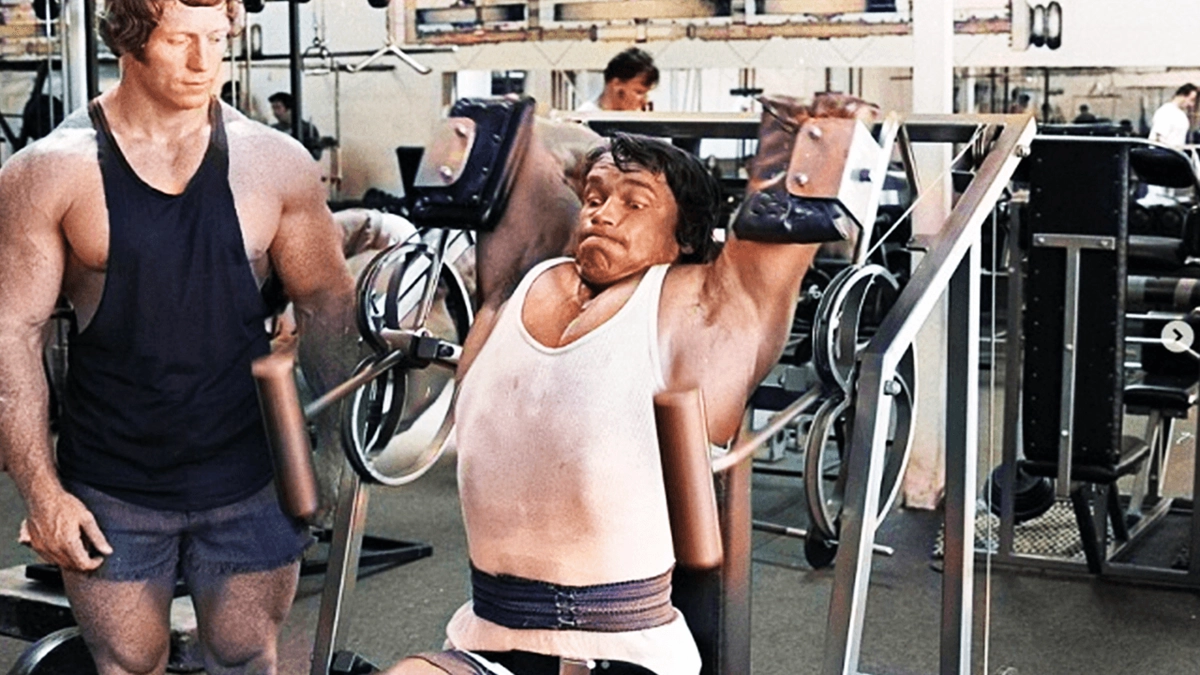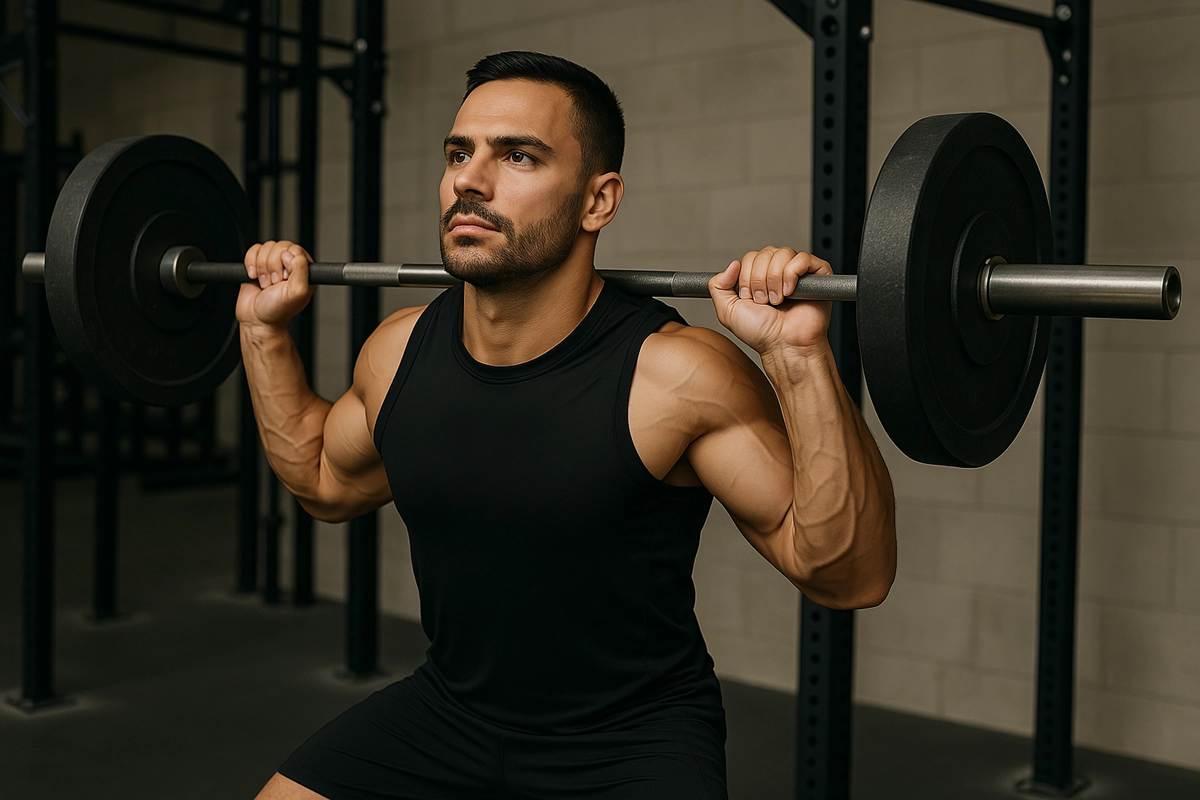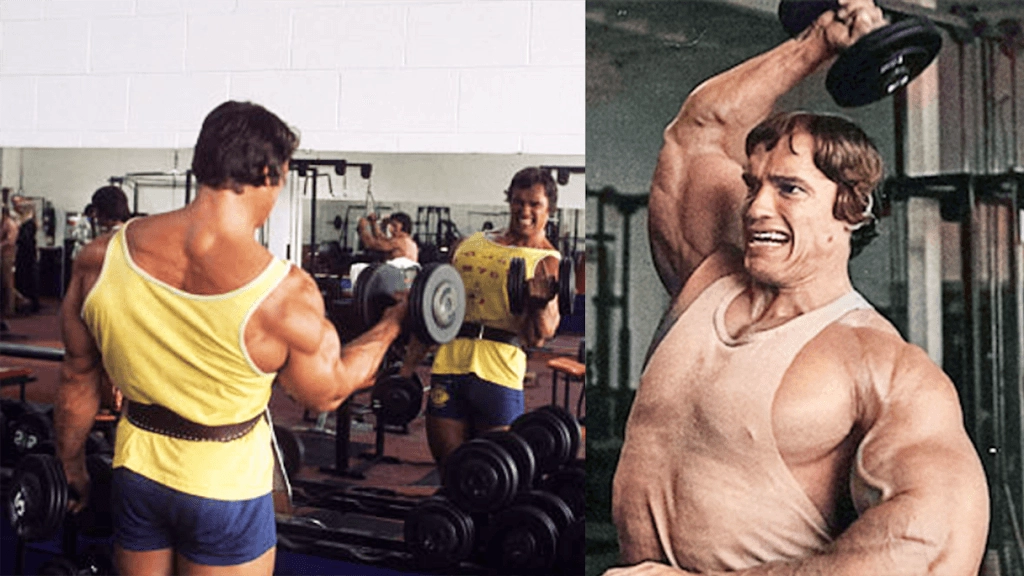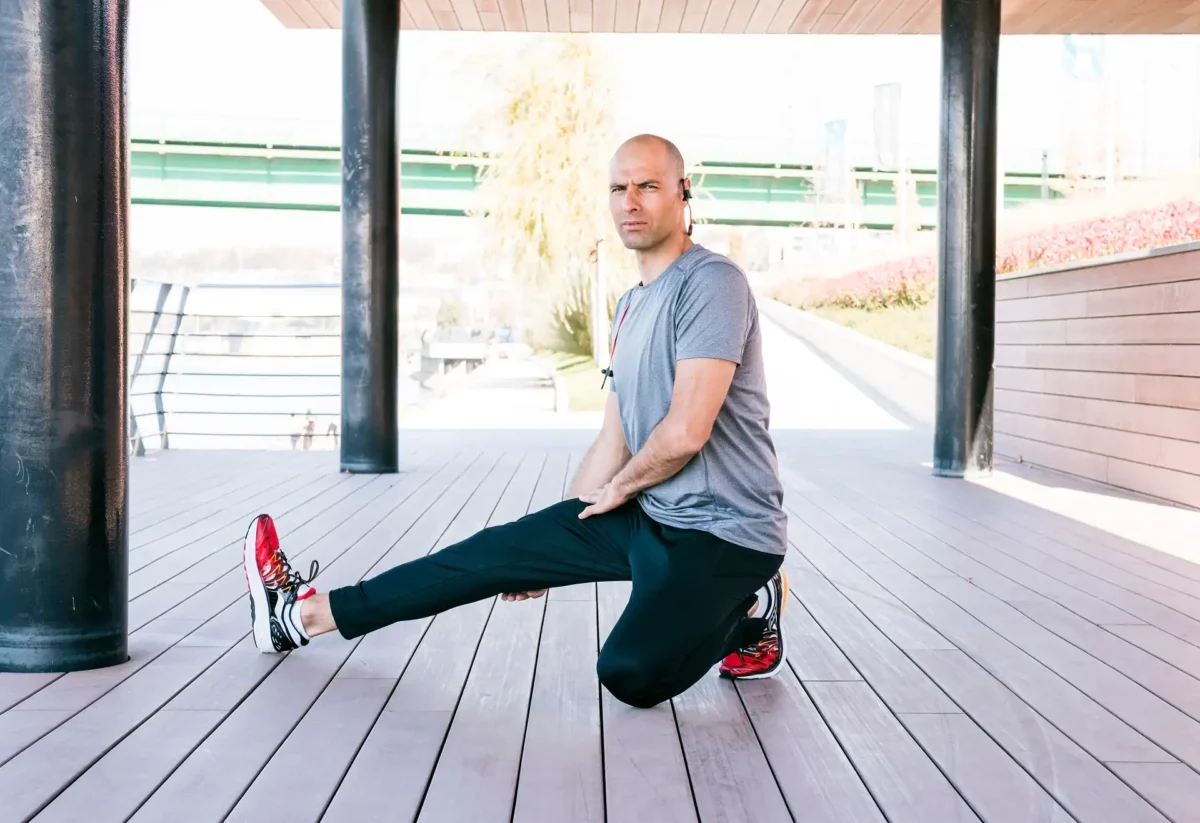Arnold Schwarzenegger once revealed that his massive back development came not just from heavy lifting but from mentally connecting with each muscle fiber during training.
You’ll discover how combining targeted shoulder and back exercises can transform your upper body strength while improving posture and daily function.
These 11 proven movements, when performed with proper form and progression, will help you build the V-taper physique that’s both aesthetically impressive and functionally powerful.
Introduction To Shoulder and Back Workout
Whether you’re aiming to build an impressive V-taper like Arnold Schwarzenegger or simply want better posture and strength, training your shoulders and back is essential.
Your upper body workout needs to target multiple muscle groups, including the powerful latissimus dorsi and deltoids.
Start with basic movements like the shoulder press to build foundational strength.
You’ll need a mix of free weights and resistance bands to create an effective routine that promotes shoulder stability and muscle growth.
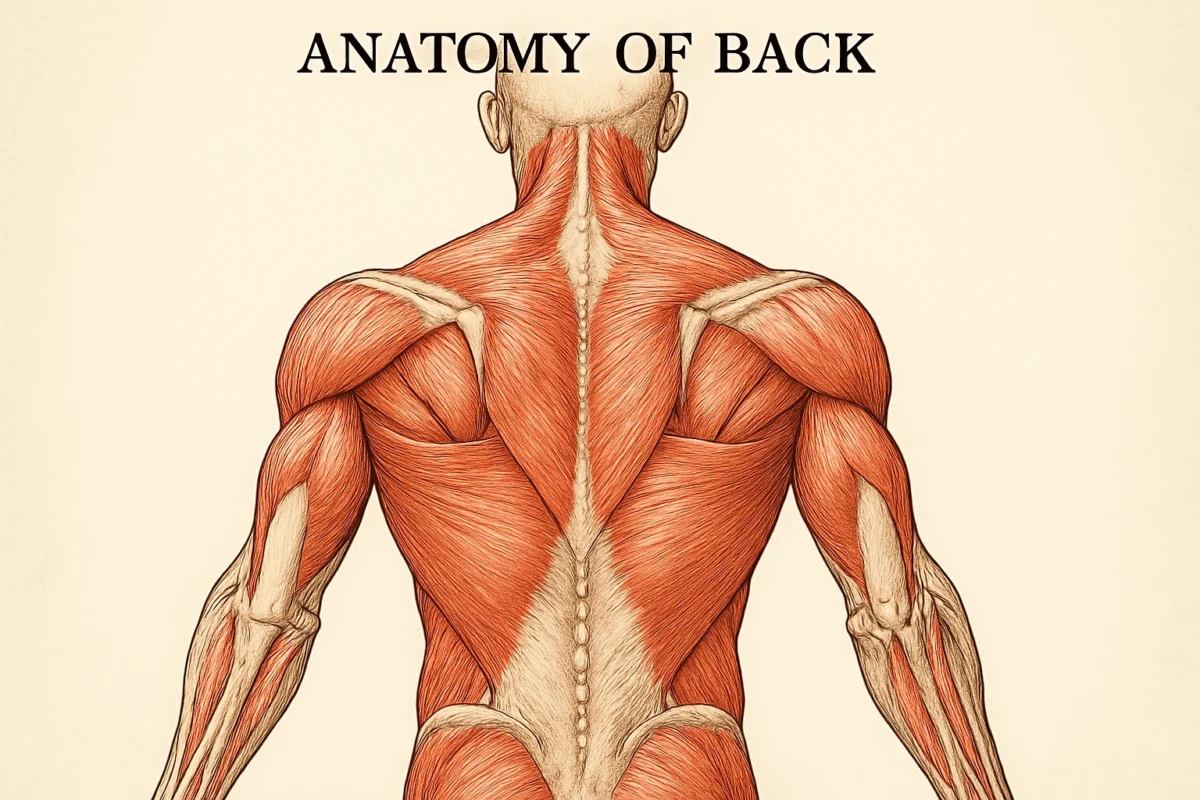
Arnold’s approach to back and shoulder workouts emphasized controlled movements and proper form.
By following a structured training program, you’ll develop:
- Better posture and reduced injury risk
- Increased pulling and pushing strength
- Enhanced athletic performance
- Balanced muscle development
- Improved shoulder mobility and function
Get ready to transform your physique through focused, consistent training.
Best Back And Shoulder Workout
You’ll build powerful shoulders and a strong back with these five essential exercises that Arnold himself relied on during his championship years.
The seated dumbbell shoulder press and barbell bent-over row form the foundation of your workout, while lateral raises target those boulder-like deltoids.
Standing barbell overhead presses and dumbbell upright rows complete this intense sequence that’ll transform your upper body development.
1. Seated Dumbbell Shoulder Press
When you’re ready to build boulder shoulders like Arnold’s, you’ll need proper form and technique to make the most of this powerful exercise.
Keep your core tight throughout the movement and maintain control of the weight – don’t let momentum take over as you press the dumbbells overhead.
You’ll want to start with lighter weights to master the form before increasing the load, as shoulder injuries can happen if you rush into heavy pressing movements.
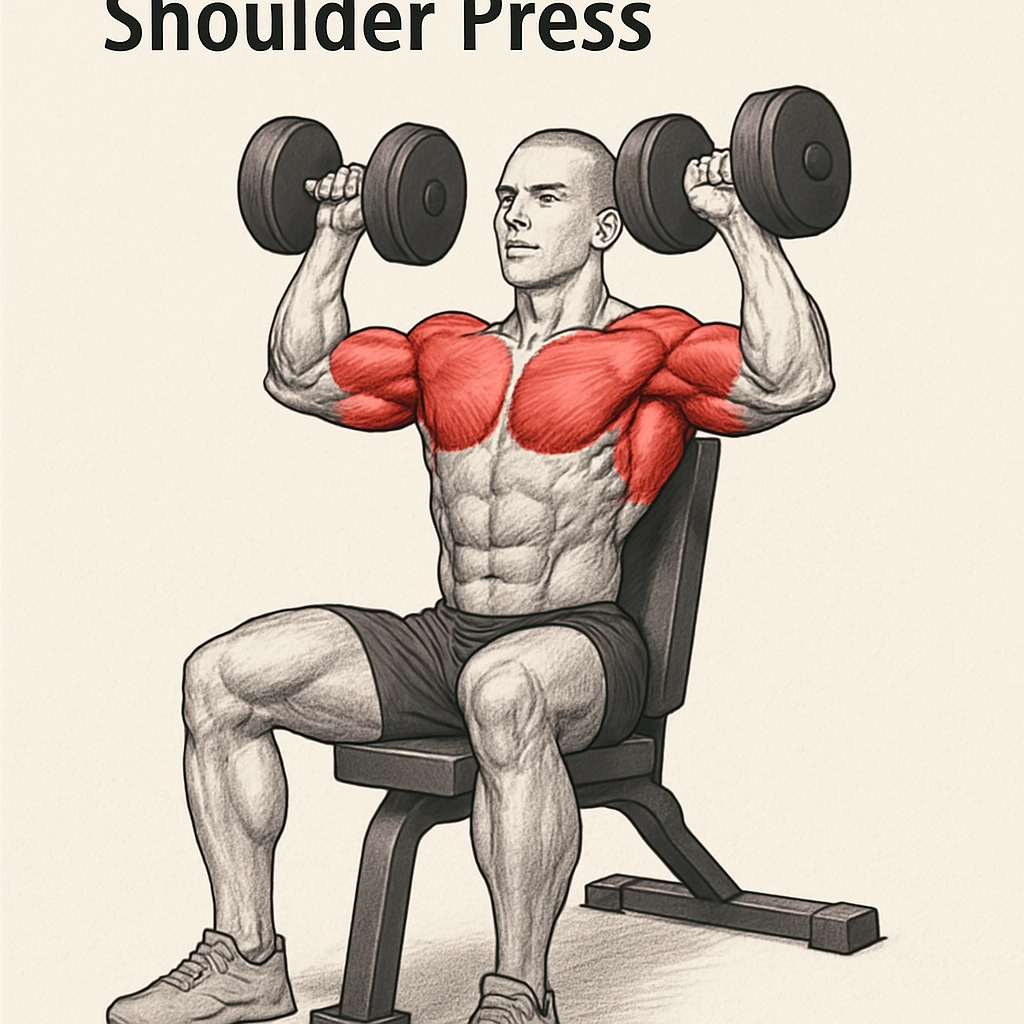
#Workout Tips
The seated dumbbell shoulder press stands as a cornerstone exercise for building powerful deltoids and upper body strength.
When performing this exercise for ideal progressive overload, maintain core stability throughout each rep. Keep your shoulder joint protected by avoiding locked elbows, and focus on engaging your posterior chain.
As you press upward, coordinate your breath with the movement for enhanced performance.
| Training Style | Sets | Reps |
| Strength Training | 4-5 | 5-8 |
| Hypertrophy | 3-4 | 8-12 |
| Endurance Training | 2-3 | 15-20+ |
| Power Training | 3-5 | 3-6 |
2. Barbell Bent Over Row
You’ll want to maintain proper form throughout this challenging exercise that Arnold himself credited for building his iconic back width.
Keep your core engaged and spine neutral as you perform the movement to prevent injury and maximize muscle engagement.
When choosing your weight, start lighter to master the form before progressing to heavier loads that’ll test your strength and dedication.
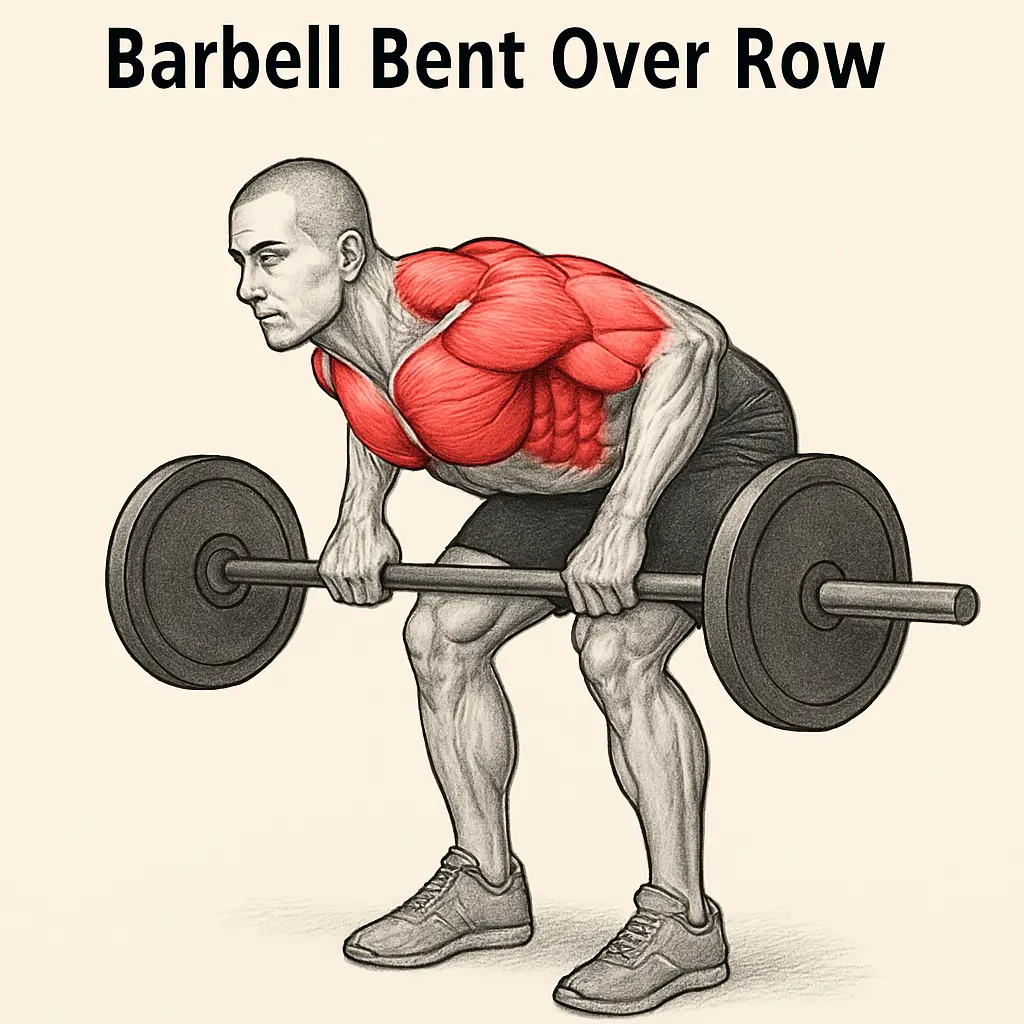
#Workout Tips
Mastering proper form in the barbell bent-over row can transform your back development and strength gains.
Focus on squeezing your shoulder blades together while pulling the barbell to your lower chest. Keep your posterior deltoid strength in check by maintaining a straight back and neutral neck position.
When you’re training these muscle groups, incorporate the barbell row into your training split for maximum results.
| Training Style | Sets | Reps |
| Strength Training | 4-5 | 5-8 |
| Hypertrophy | 3-4 | 8-12 |
| Endurance Training | 2-3 | 12-15+ |
| Power Training | 3-5 | 3-6 |
3. Seated Dumbbell Lateral Raise
When performing seated dumbbell lateral raises, you’ll want to maintain proper form by keeping your core tight and shoulders back throughout the movement.
You can maximize muscle engagement by raising the dumbbells slowly to shoulder height while keeping a slight bend in your elbows to prevent joint strain.
You mustn’t swing or use momentum to lift the weights, as Arnold always emphasized that controlled movements build better shoulders than cheating reps.
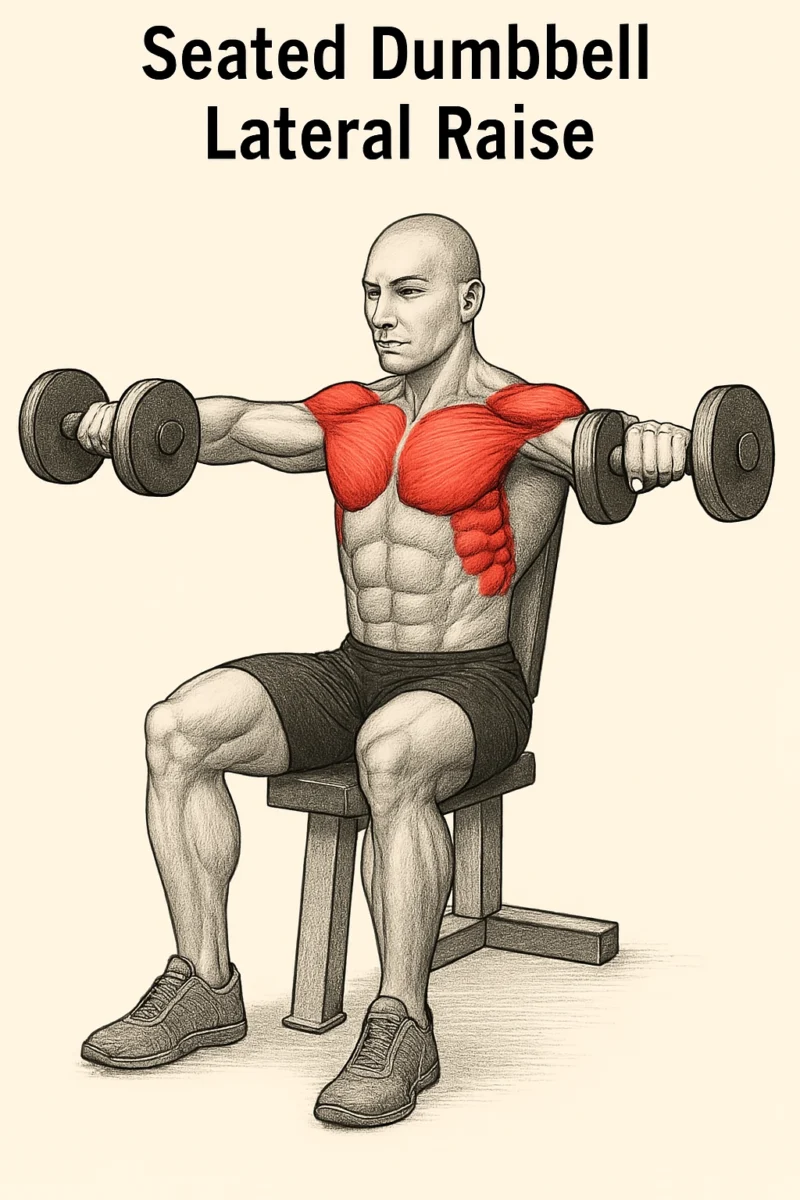
#Workout Tips
To build strong, sculpted shoulders that command attention, the seated dumbbell lateral raise stands as a cornerstone exercise in any serious lifter’s routine.
Focus on proper form by maintaining back alignment and controlled shoulder activation throughout the movement. Choose a challenging weight that engages muscle fibers effectively without compromising technique.
Keep your pectoralis muscles relaxed while executing precise, deliberate raises.
| Training Style | Sets | Reps |
| Strength Training | 3-4 | 8-12 |
| Hypertrophy | 3-4 | 12-15 |
| Endurance Training | 2-3 | 20-25+ |
| Power Training | 3-4 | 6-8 |
4. Standing Barbell Overhead Press
When performing the standing barbell overhead press, you’ll want to maintain a firm grip slightly wider than shoulder-width apart while keeping your core tight throughout the movement.
Remember to breathe out as you push the barbell overhead, and don’t lock your elbows at the top – Arnold himself always emphasized controlled movements for maximum muscle engagement.
Keep your feet planted shoulder-width apart, and resist the urge to lean back as you press, ensuring your lower back stays neutral and protected.
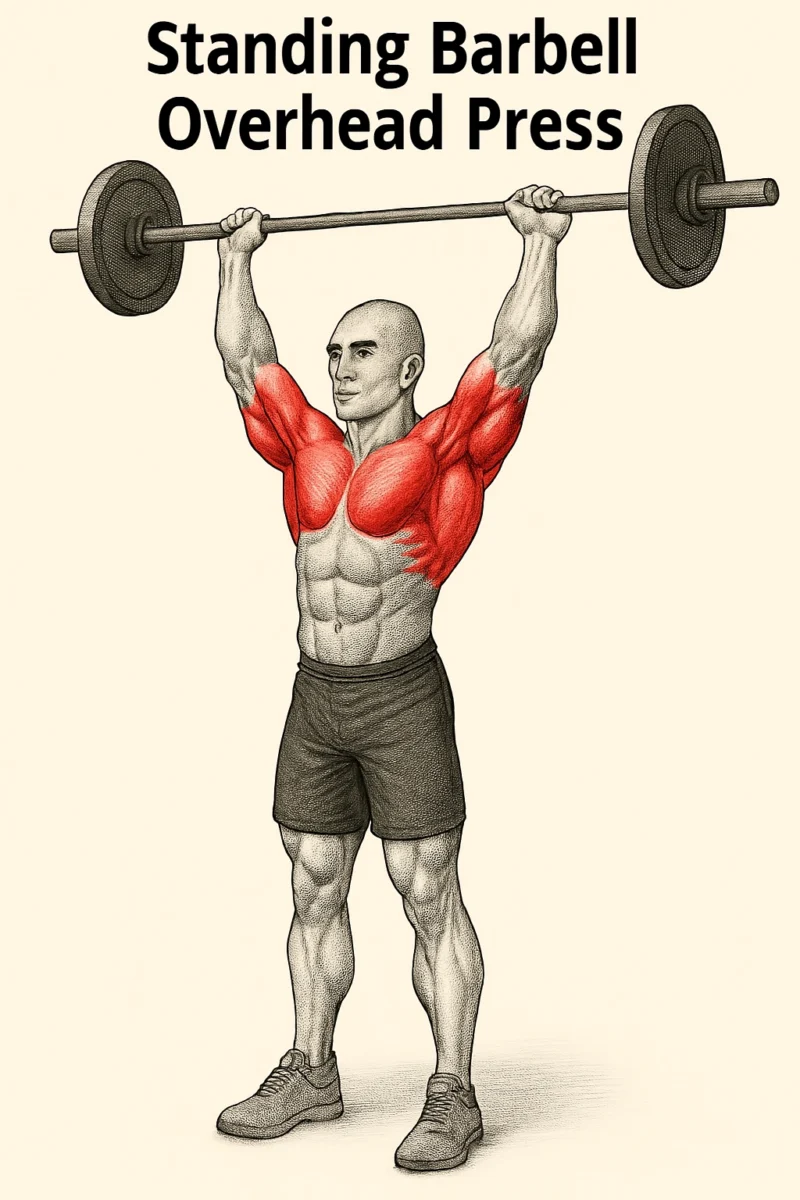
#Workout Tips
Master the standing barbell overhead press by gripping the bar with an overhand grip slightly wider than shoulder width.
Position the barbell at your collarbone and press upward, clearing your head while maintaining shoulder-width foot placement.
To achieve muscular gains and hit your record, engage your core as you exhale during the lift.
Lower the weight with control for metabolic blast benefits.
| Training Style | Sets | Reps |
| Strength Training | 4-5 | 5-8 |
| Hypertrophy | 3-4 | 8-12 |
| Endurance Training | 2-3 | 15-20+ |
| Power Training | 3-5 | 3-6 |
5. Standing Dumbbell Upright Row
You’ll get the most from your standing dumbbell upright row by maintaining proper form throughout the movement, which means keeping your core tight and back straight.
Your grip should be wider than shoulder-width apart on the dumbbells, with your palms facing your body and elbows pointing outward during the lift.
For maximum muscle activation, control the weight as you lift it to chest height and lower it back down, avoiding any swinging or momentum-based movements.
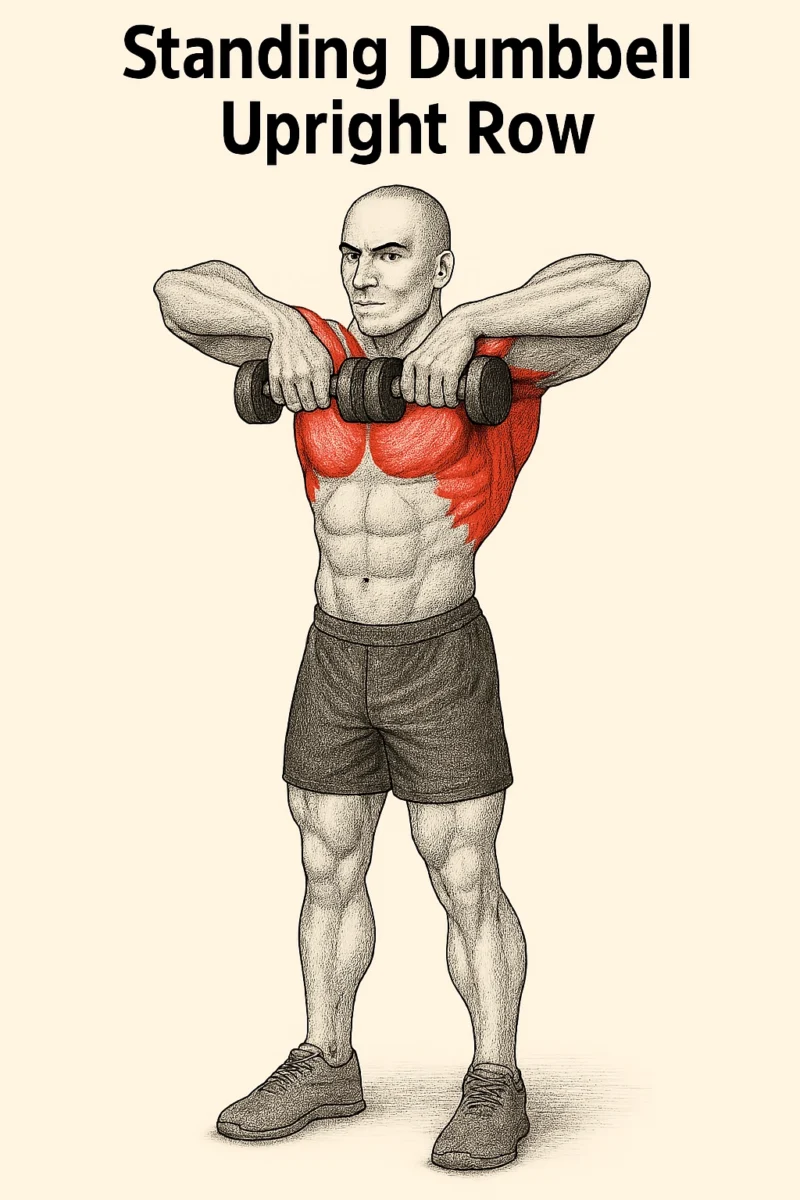
#Workout Tips
The standing dumbbell upright row is a powerhouse movement that targets both your shoulders and upper back simultaneously.
When performing the upright row, you’ll want to maintain proper form by keeping your shoulder blades retracted and the weight close to your body.
Start with lighter dumbbells until you’ve mastered the movement pattern – any strength coach will tell you that form trumps weight.
| Training Style | Sets | Reps |
| Strength Training | 4-5 | 5-8 |
| Hypertrophy | 3-4 | 8-12 |
| Endurance Training | 2-3 | 12-15+ |
| Power Training | 3-5 | 3-6 |
6. Dumbbell Rear Delt Fly
When you’re performing rear delt flyes, you’ll want to keep your core tight and maintain control throughout the entire movement.
Keep your arms slightly bent and focus on squeezing your shoulder blades together at the top of each rep.
You’ll get the most from this exercise by using a weight that allows you to maintain proper form while still challenging your muscles – as Arnold would say, “the last three or four reps are what makes the muscle grow.”
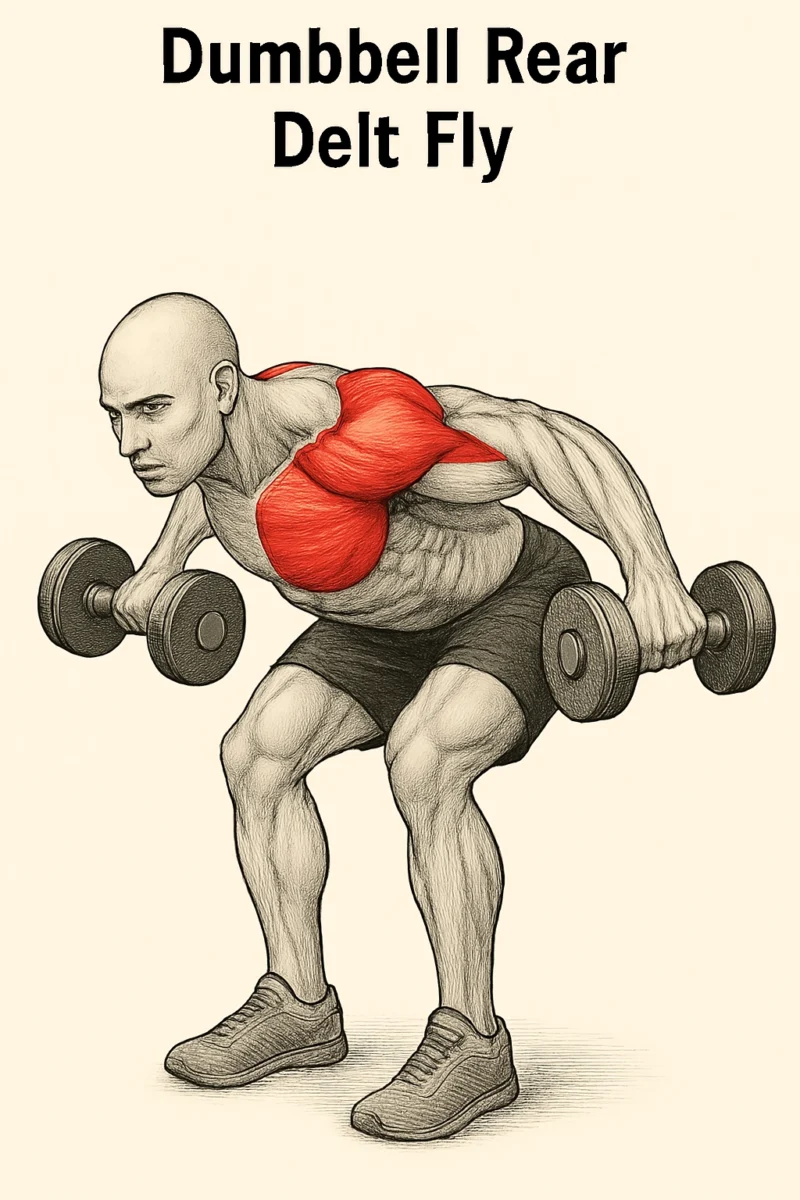
#Workout Tips
Although mastering proper form is essential for any exercise, dumbbell rear delt flys require particular attention to technique for maximum effectiveness and injury prevention.
Like the bent-over dumbbell fly and seated dumbbell lateral raise, you’ll want to maintain control throughout the movement.
Keep your spine straight, knees slightly bent, and avoid locking your arms – this protects your joints while targeting the rear deltoids effectively.
| Training Style | Sets | Reps |
| Strength Training | 3-4 | 8-12 |
| Hypertrophy | 3-4 | 12-15 |
| Endurance Training | 2-3 | 20-25+ |
| Power Training | 3-4 | 6-8 |
7. Assisted Pull-Up Machine
When starting with the assisted pull-up machine, set a weight that allows you to complete 8-12 reps with proper form.
Position yourself on the knee pad, grasp the overhead bar with a wide grip, and make sure your shoulders are pulled back before initiating the movement.
Once you’re able to perform three sets of 12 reps with control, gradually decrease the assistance weight to build up to unassisted pull-ups.
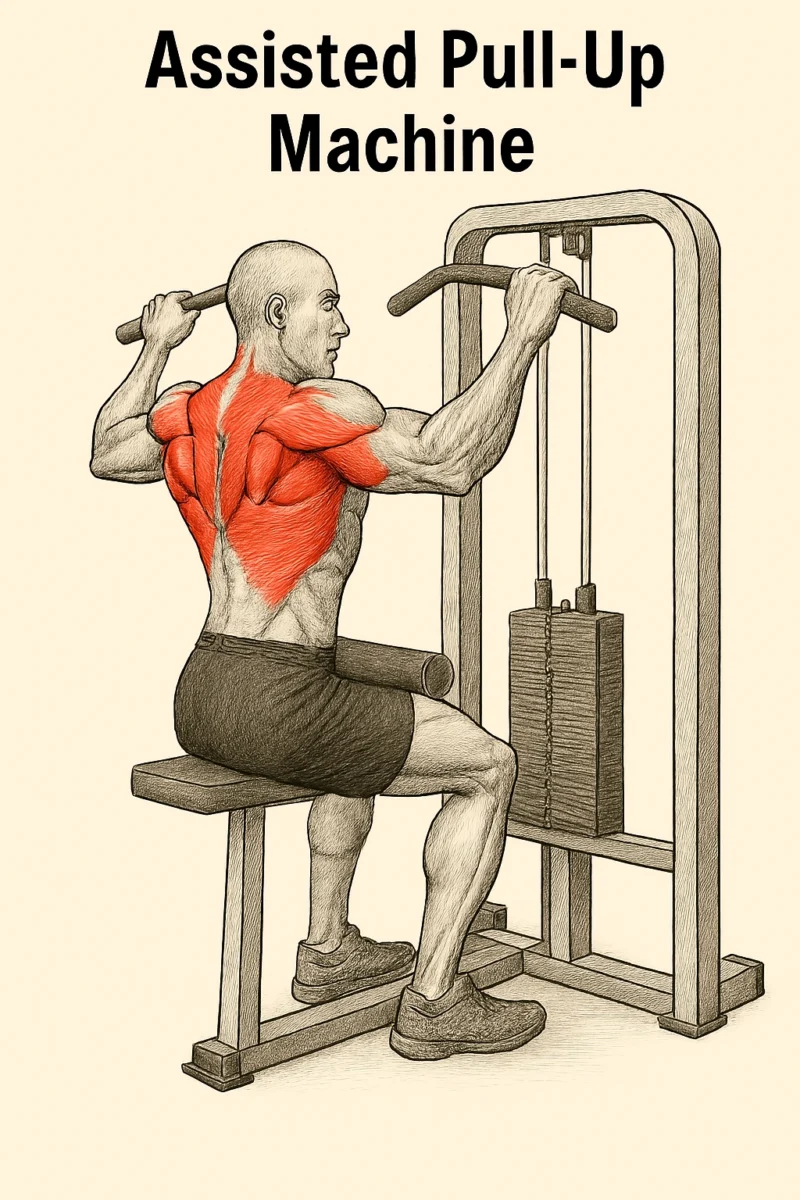
#Workout Tips
Since mastering the pull-up challenges many fitness enthusiasts, the assisted pull-up machine offers an excellent way to build your back and shoulder strength.
Grip the pull-up bar with your palms facing away, and let your body hang freely. As you engage your upper back muscles, pull your chest toward the bar while keeping your shoulders relaxed and core tight.
| Training Style | Sets | Reps |
| Strength Training | 4-5 | 4-6 |
| Hypertrophy | 3-4 | 6-10 |
| Endurance Training | 2-3 | 10-15+ |
| Power Training | 3-4 | 3-5 |
8. Hyperextension
When performing hyperextensions, you’ll want to maintain strict form while engaging both your lower back and hamstring muscles throughout the movement.
You can start with bodyweight-only sets to master proper technique before adding weight plates or dumbbells for increased resistance.
Remember to control the descent and avoid swinging or using momentum, as this exercise’s effectiveness comes from slow, deliberate movement patterns that target your posterior chain.
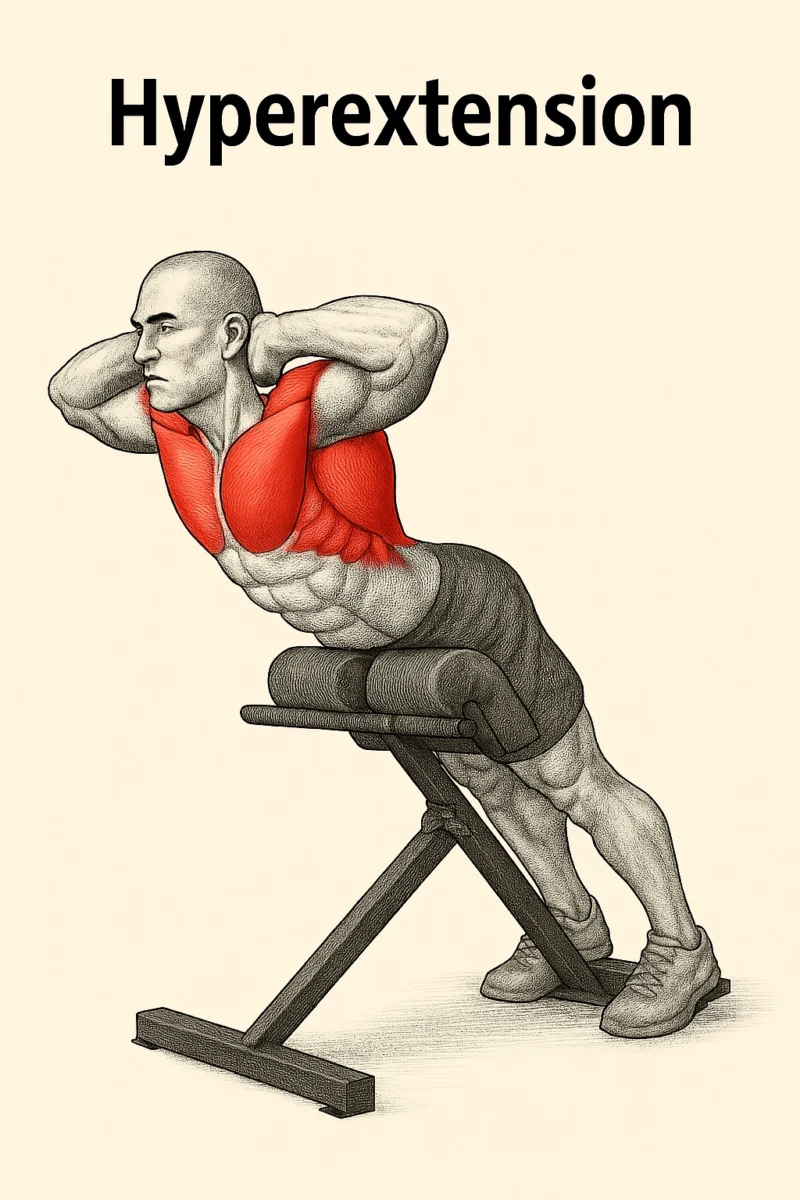
#Workout Tips
Three key tips will help you master the hyperextension exercise for maximum back and shoulder gains.
Like Arnold’s focus on the erector spinae muscles, maintain a neutral spine throughout the movement.
Keep your head aligned with your back to protect your rotator cuff.
When returning to the starting position, use controlled movements rather than momentum to target your lat muscles effectively.
| Training Style | Sets | Reps |
| Strength Training | 3-4 | 8-12 |
| Hypertrophy | 3-4 | 12-15 |
| Endurance Training | 2-3 | 20-25+ |
| Power Training | 3-4 | 6-8 |
9. Standing Dumbbell Front Raise
When you’re ready to tackle the standing dumbbell front raise, you’ll want to maintain proper form to maximize your shoulder gains.
Remember to keep your core tight and your back straight as you lift the weights to shoulder height with controlled movements.
For the best results, start with lighter weights until you’ve mastered the movement pattern, just as Arnold always emphasized perfecting form before increasing the load.
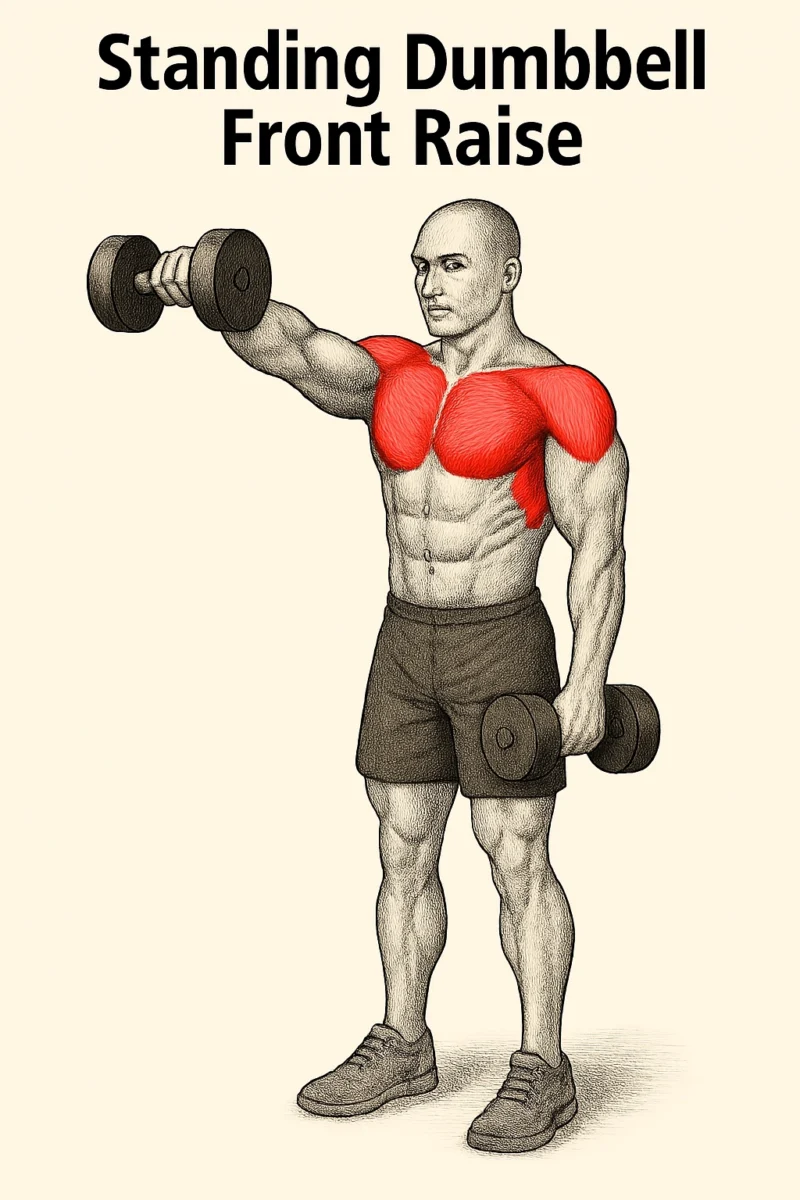
#Workout Tips
Master the standing dumbbell front raise with proper form to sculpt stronger shoulders and improve upper body stability.
Keep your spine neutral as you lift weights to shoulder height with a controlled motion.
Don’t forget to engage your core and maintain relaxed shoulders throughout the movement.
After reaching the top position, slowly lower the weights back to the starting position in a deliberate manner.
| Training Style | Sets | Reps |
| Strength Training | 3-4 | 8-12 |
| Hypertrophy | 3-4 | 12-15 |
| Endurance Training | 2-3 | 20-25+ |
| Power Training | 3-4 | 6-8 |
10. Barbell Bench Press
You’ll find the barbell bench press to be a powerhouse exercise that builds strength across your chest, shoulders, and triceps simultaneously.
Position yourself flat on the bench with your feet planted firmly on the ground and grasp the barbell with a grip slightly wider than shoulder-width.
Before you begin pressing, think like Arnold and remember his famous advice: “The last three or four reps are what makes the muscle grow.” – This mindset will help you maintain proper form through each set.
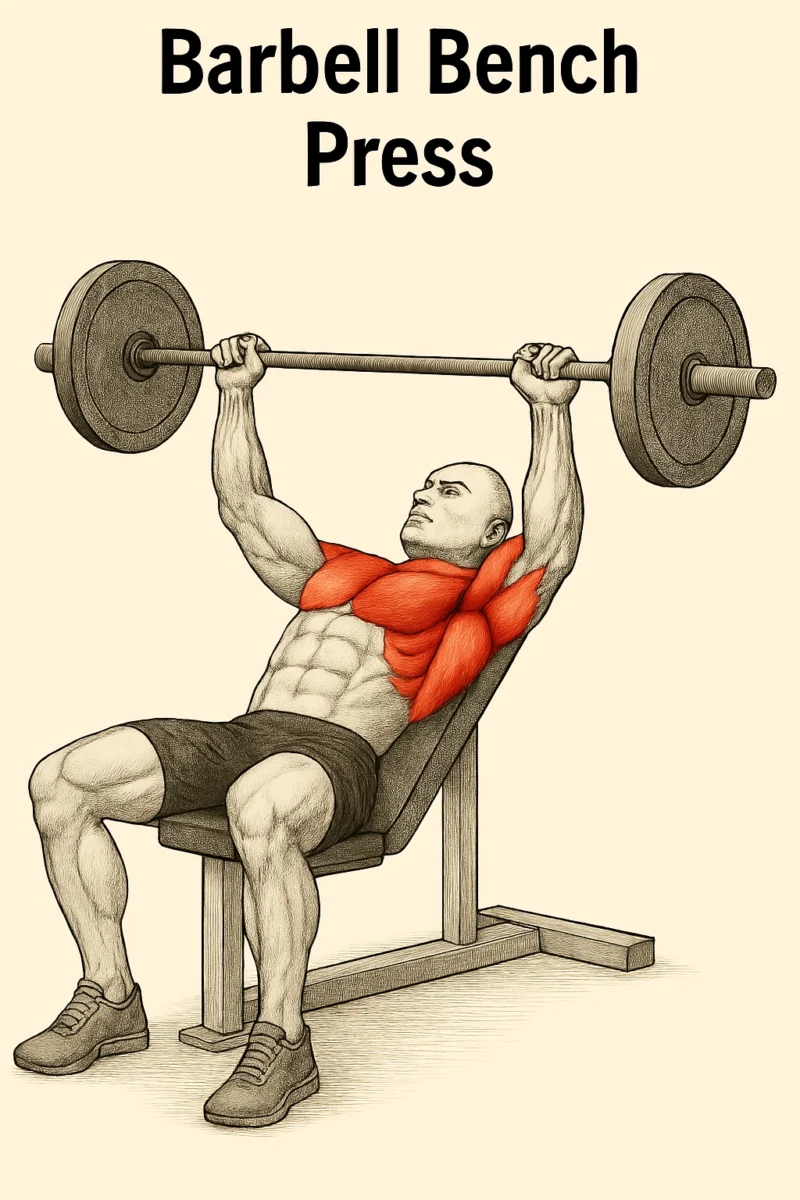
#Workout Tips
To perform the barbell bench press effectively, proper form and technique are essential for maximizing your gains while preventing injury.
Keep your shoulder blades retracted for stability while engaging your pectoralis major muscles.
Don’t forget to maintain a steady breathing pattern – inhale as you lower the barbell and exhale during the shoulder press motion.
When performing lat raises between sets, guarantee complete recovery.
| Training Style | Sets | Reps |
| Strength Training | 4-5 | 5-8 |
| Hypertrophy | 3-4 | 8-12 |
| Endurance Training | 2-3 | 15-20+ |
| Power Training | 3-5 | 3-6 |
11. Dumbbell Shrugs
You’ll want to start with a lighter weight to master proper form before increasing the load in your dumbbell shrugs.
Keep your movements controlled and precise, lifting straight up toward your ears while avoiding any rolling motion in your shoulders.
Make sure you’re getting a full range of motion by letting your shoulders relax entirely at the bottom of each rep and squeezing hard at the top for maximum trap activation.
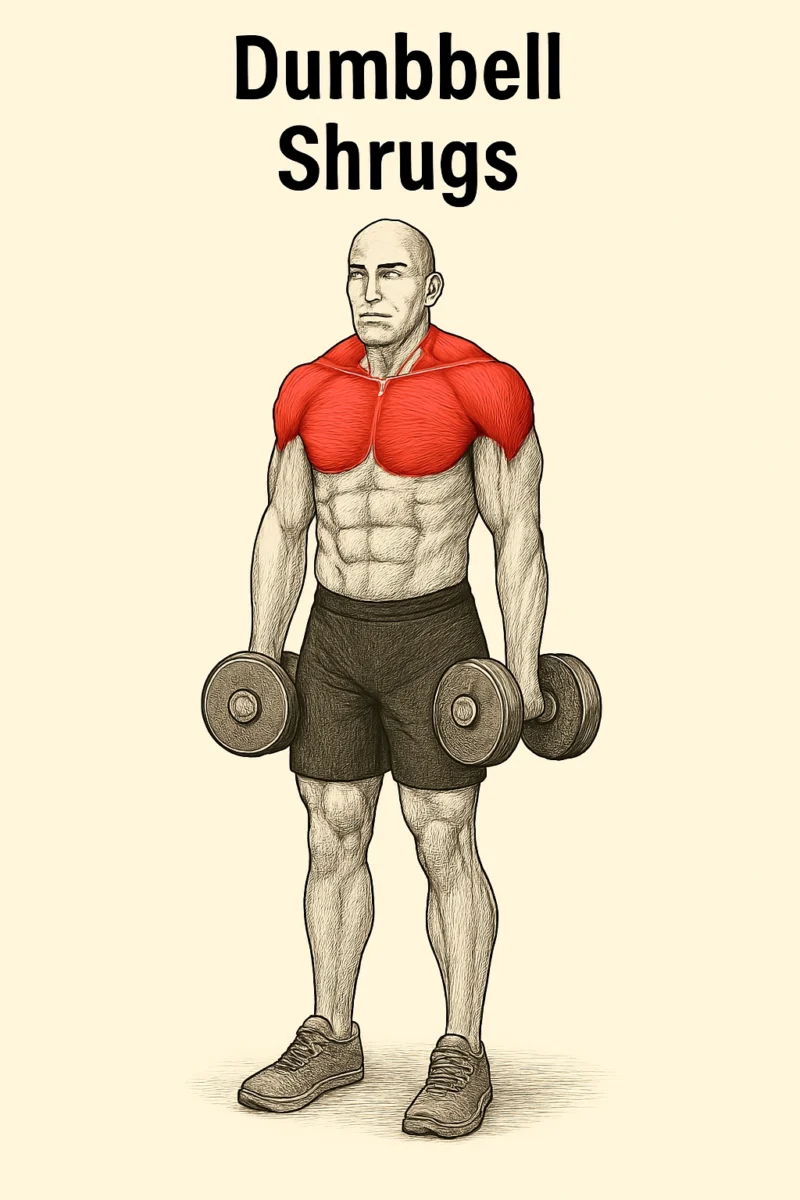
#Workout Tips
Whether you’re aiming to build massive traps like Arnold or simply strengthen your upper body, dumbbell shrugs are a fundamental exercise for developing impressive shoulder and back muscles.
To maximize your results, keep your shoulders relaxed between sets, use controlled movements, and focus on squeezing your spinal muscles at the top of each shrug.
| Training Style | Sets | Reps |
| Strength Training | 3-4 | 10-12 |
| Hypertrophy | 3-4 | 12-15 |
| Endurance Training | 2-3 | 22-25+ |
| Power Training | 3-4 | 6-8 |
Benefits Of Back And Shoulder Workout
When you strengthen your back and shoulders through regular workouts, you’ll notice significant improvements in your posture and a reduction in nagging lower back pain.
You’re building a protective armor of muscle that helps prevent common workout injuries and supports proper form during other exercises.
These benefits extend far beyond the gym, as stronger shoulders and back muscles make everyday activities easier while helping you maintain that confident, upright posture Arnold always emphasized.
#Goodbye Lower Back Pain
If chronic lower back pain has been holding you back from living your best life, incorporating targeted shoulder and back workouts into your fitness routine can be transformative.
The efficacy of resistance exercise training has been proven to strengthen your musculoskeletal system and provide relief from persistent discomfort.
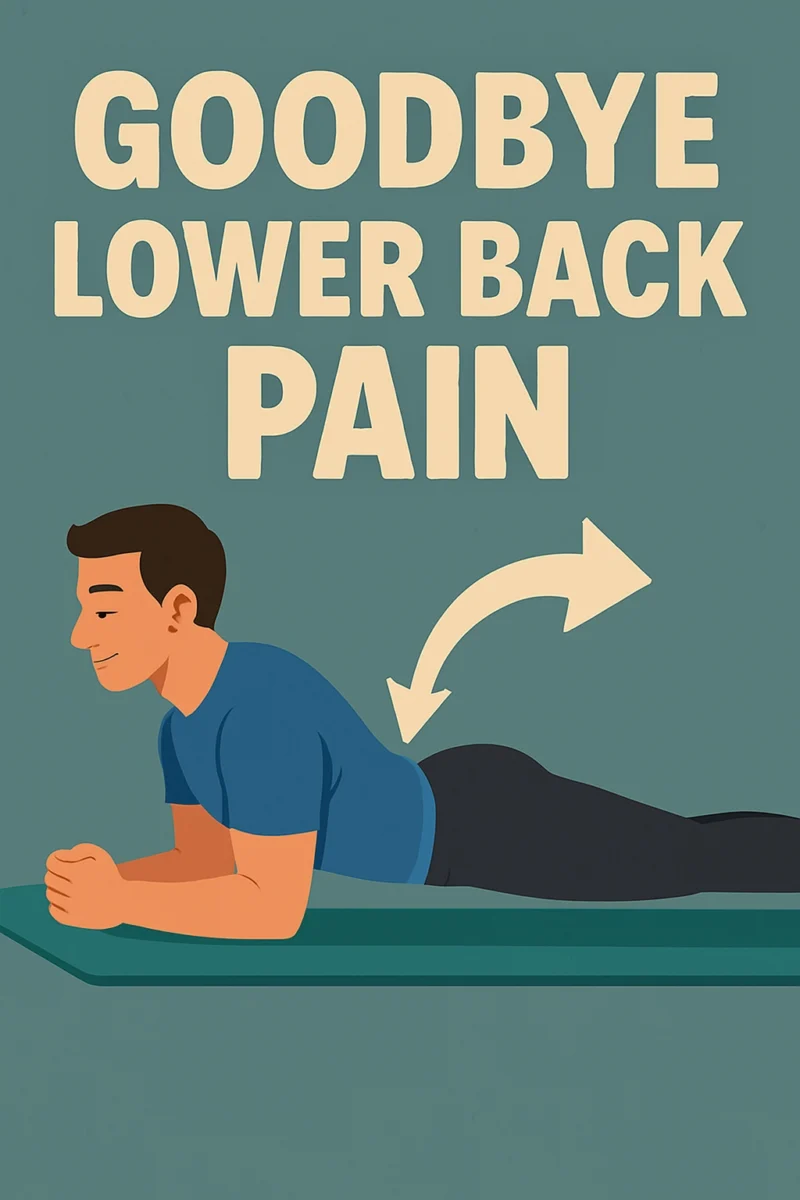
When you engage in regular strength training that targets your upper body, you’re not just building muscle – you’re creating a natural support system for your spine.
A well-designed shoulder and back workout can help stabilize your core and improve posture, directly addressing the root causes of lower back pain.
You’ll notice improvements in your daily activities as your body becomes stronger and more resilient.
#Improved Posture
Maintaining proper posture can revolutionize your daily life, and targeted back and shoulder workouts make it possible.
If you’re spending hours hunched over a desk, you’re likely placing unnecessary strain on your lumbar spine, which can lead to chronic pain and discomfort.
The good news? You can combat poor posture through consistent strength training. A focused back workout strengthens the muscles that keep your spine aligned, while a strategic shoulder workout helps pull your shoulders back into their natural position.
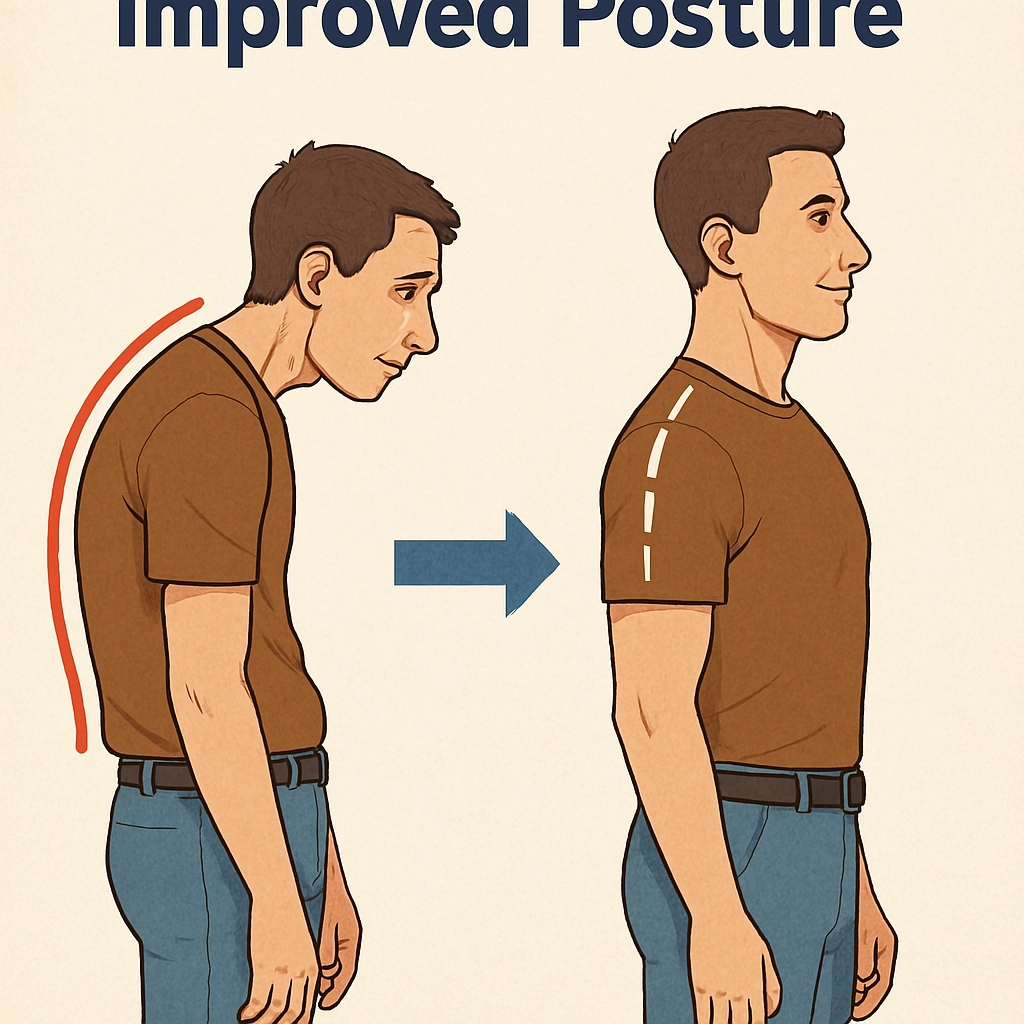
Research shows that just eight weeks of regular training can significantly improve your posture and reduce body aches. By investing time in these exercises, you’re not only enhancing your physical health but also preventing future posture-related issues.
It’s a simple solution that delivers lasting results.
#Prevent Injury
Strong shoulders and a resilient back don’t just help you stand tall – they’re your body’s natural armor against injuries. Through consistent strength training of your upper body, you’ll build the muscular foundation needed to protect yourself during daily activities and sports.
As you age, your muscles naturally begin to weaken, increasing your risk of falls and injuries. That’s why a regular shoulder and back workout routine is essential – it promotes muscle growth and strengthens your bones, reducing your chance of fractures.

When you incorporate injury prevention exercises into your training, you’re investing in long-term mobility and independence.
Think of your upper body strength training as building a fortress – the stronger your foundation, the better equipped you’ll be to handle life’s physical challenges.
Training Volume And Recovery Tips
You’ll want to train your back and shoulders 2-3 times per week, allowing at least 48 hours between sessions for proper muscle recovery.
To maximize your gains, you should perform 12-20 total sets per muscle group during each workout, with 8-12 repetitions per set.
Remember that Arnold Schwarzenegger himself emphasized the importance of rest days, famously saying that “muscles grow when you’re resting, not when you’re working out.”
1. Training Volume
Success in shoulder and back training hinges on understanding proper training volume – the sweet spot between pushing hard enough to grow and allowing adequate recovery.
For peak muscle growth, aim for 28-30 sets per muscle group weekly. When focusing on hypertrophy, structure your workouts with 6-12 repetitions and 3-6 sets per exercise, keeping rest periods around 60 seconds.
Three sets are ideal for building muscle mass, while endurance goals require four or more sets with lighter weights.
Think of sets and repetitions as your building blocks – they’re what determine your total training volume. If you’re just starting, begin with 6-10 sets per muscle group weekly, then gradually increase as your body adapts.
2. Muscle Recovery
While pushing your muscles to their limits drives growth, proper recovery between workouts is what builds strength and size.
For peak results, you’ll need to schedule your resistance training sessions with at least 48 hours of rest between them.
Pick workout days that fit your schedule – consistency matters more than specific timing. If you’re unsure about structuring your recovery periods, consider consulting a personal trainer who can help customize your rest schedule.
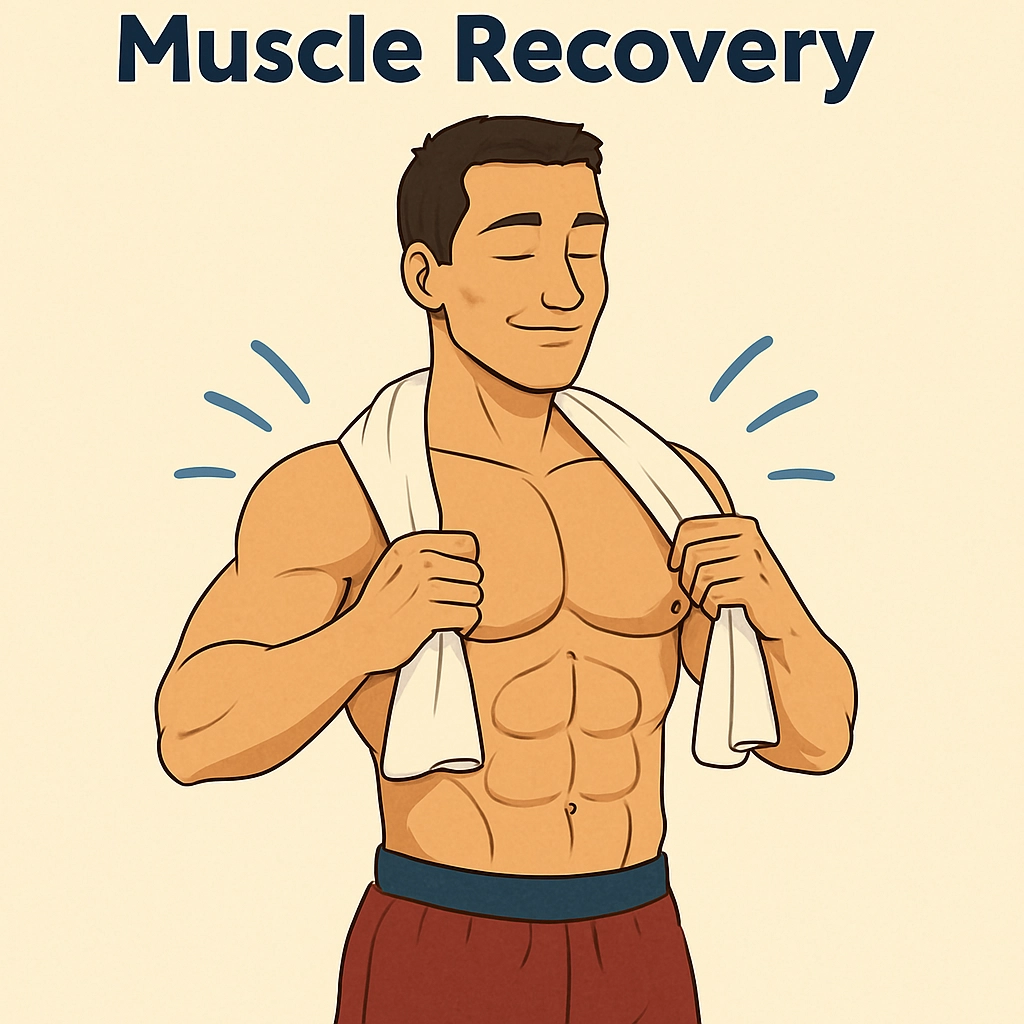
Remember that muscles need time to repair and strengthen after intense training sessions.
Key recovery tips:
- Train shoulders and back no more than twice per week
- Allow a 48-hour minimum between workouts
- Listen to your body’s signals
- Stay consistent with your chosen schedule
- Get adequate sleep and nutrition
To Wrap It All Up
Persevere through your powerful shoulder and back progression to build a more substantial, more sculpted upper body. You’ll find that following these fundamental exercises, from Arnold’s favorite military presses to dynamic dumbbell rows, transforms your physique and fortifies your frame.
Remember, consistent commitment coupled with correct form creates compelling results. Now it’s time to tackle these transformative techniques and turn your training into triumph.
FAQs
What Are the Benefits of Combining Shoulder and Back Workouts?
Combining shoulder and back workouts improves posture, increases upper body strength, enhances muscle balance, and saves time by training complementary muscle groups together. This approach also boosts caloric burn, supports functional movements like pulls and lifts, and optimises workout efficiency for overall upper body development.
Can I Train Shoulders and Back on the Same Day?
Train shoulders and back on the same day to maximise workout efficiency, balance pushing and pulling muscle groups, and promote upper body development. Ensure proper warm-up and controlled volume to prevent fatigue. This split works well for intermediate to advanced lifters aiming for strength and hypertrophy.
How Often Should I Do Shoulder and Back Workouts?
Do shoulder and back workouts 1-2 times per week for muscle growth and recovery. Allow at least 48 hours between sessions to prevent overtraining and optimise performance. Frequency depends on your program, volume, and goals, but twice weekly training is effective for strength and hypertrophy gains.
Are Shoulder and Back Workouts Good for Posture?
Shoulder and back workouts improve posture by strengthening upper back, rear delts, and stabilising muscles. Exercises like rows and reverse flyes counteract slouching and forward head posture. Stronger shoulders and back support proper spinal alignment, reducing injury risk and promoting confident upright posture daily.
What Is the Best Shoulder and Back Workout for Beginners?
The best shoulder and back workout for beginners includes seated dumbbell shoulder press, lateral raises, bent-over dumbbell rows, and assisted pull-ups. Perform 3 sets of 10-12 reps each with light to moderate weight. Focus on form and control to build foundational strength and prevent injury.
Shoulder and Back Workout for Strength vs Hypertrophy
The main difference between shoulder and back workouts for strength vs hypertrophy is rep and weight range. Strength workouts use heavier weights with 3-6 reps per set to build maximal force. Hypertrophy workouts use moderate weights with 8-12 reps per set to increase muscle size through higher volume.


